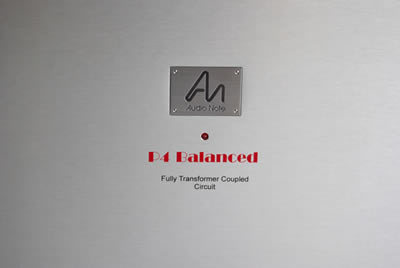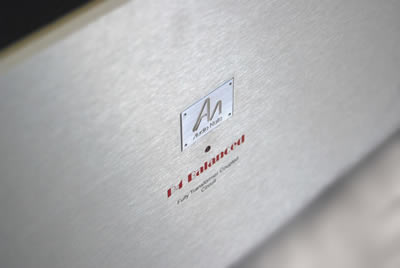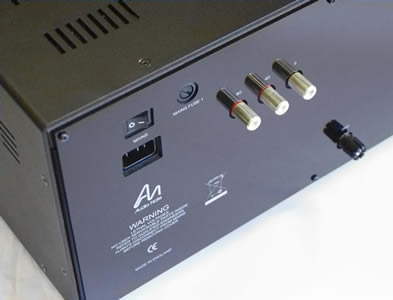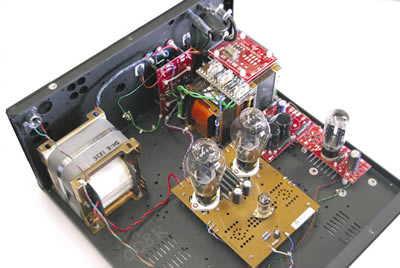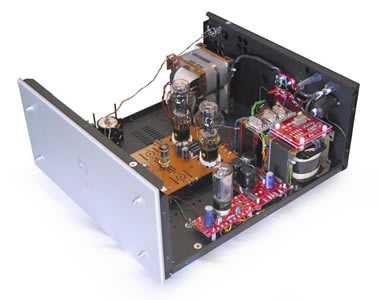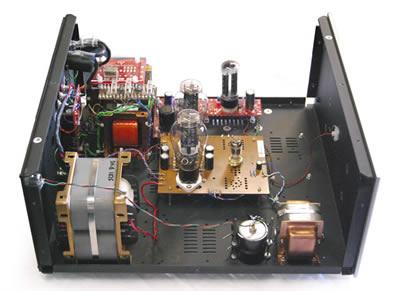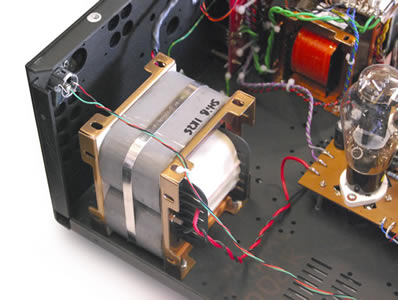A N A L O G V O I C E
AUDIO NOTE DISTRIBUTOR - HUNGARY
Zalan Baranyai: +36 30 235 8 234
e-mail: info @ analogvoice.hu
 Back to the main page Back to the main pageLevel 3 P4 Balanced Ultimate Copper Power
The Audio Note™ P4 Balanced Transformer Coupled Mono Power AmplifiersThe Ultimate Solution to Copper Wired Audio Amplification! A Little Audio HistoryOver the history of audio, one of the few aspects of circuit topology that designers have generally agreed on is that the shortest signal path is always the best, as long as there is enough gain at the right impedance in each stage to drive whatever component or speaker comes next in line in the system. It has therefore been quite baffling to watch the ever increasing complexity of most modern amplifiers, they really are anything but “a straight wire with gain", but rather a reflection on an obsession with “technology" as a fashion statement, rather than as a tool to get results that benefit what is the claimed goal, better and more realistic music reproductuctuction, unsurprisingly everything we at Audio Note™ consider good and worthwhile adheres to the original idea that simplicity is the key to better reproductuctuction and as we dig deeper into the subject and gain further experience with the possibilities offered by transformer coupling in particular. The ideas regarding transformer coupling came to the fore when we decided to replace the original parallel 211 GAKU-ON. Andy Grove and I had long agreed that we needed to create something truly outstanding to improve on the original so we decided to develop the simplest circuit configuration possible working out what it should be was actually pretty easy on paper, implementing it properly proved to be anything but simple. The “script" was to design a circuit with the absolute minimum number of stages and passive parts, and by logical reduction we ended up with a circuit with 2 active stages, and three transformers, one on the input, one as a driver and one on the output, this topology cannot be simplified further and effectively reduces the number of passive parts in the signal path to two resistors. So the GAKU-ON ended up thus; transformer coupled input, directly heated triode driver stage, coupled to output stage with a 1:1 driver transformer and a parallel pair of VT4-C/UV211 directly heated output triodes coupled to a large double C-core output transformer with a single secondary. This circuit cannot be simplified further and is therefore the most ultra simple possible, but requires a degree of transformer quality never seen before anywhere in audio whether professional or domestic (which clearly also explains why it has not been done before now), as each transformer has to be complimentary in every aspect of behaviour to the one next in line and not impose any bandwidth, phase, linearity or low level abnormalities which can be amplified by the following stage or stages, this was not small task getting to a point where each transformer was as invisible as the next despite differences in core size, design and passing signal level. The Development & OriginsIt took us 6 years to research and develop the necessary materials know how (choice of core material in this setting is hyper critical and influences sound enormously it is very easy to end up with something that sounds mushy and veiled) and transformer designs to achieve a completely “invisible" (note here that a correctly designed transformer is a virtual component, because whilst it is there physically, it is “not there" in terms of signal influence, all it should do is convert or “transform" the signal impedance, current voltage to something that will drive the next stage properly) magnetic coupling from input to output, we settled on the VT25/10Y directly heated triode as a first gain stage, as its sonic character and electrical characteristics compliments the VT4-C/UV211 very nicely. The end result is a circuit with 3 transformers, two super linear Directly Heated Triode gain stages and two Audio Note™ 2 watt tantalum resistors in the signal path, with no signal capacitor in sight, try improving on that for ultimate simplicity! The power supply design is again the simplest possible with a valve rectified (5R4WGB) choke coupled smoothing and the lowest possible capacitance. In short, nothing but nothing will ever come along that beats this, ever, put that in your calendar for 2020! So if you are looking to make your “last and final" amplifier purchase this is the only place to start. Now to the P4 Balanced which basically follow the GAKU-ONs formula exactly except for the fact that it is all copper wired, uses SHiB C-cores instead of 50% Nickel and has the 5687 as a first gain stage and a parallel pair of 300Bs as the output valves with a 5U4G choke smoothed rectifier for the HT, Audio Note™ tantalum resistors and standard capacitors everywhere.
The front panel is meant to reflect the simplicity of the content of the box, available in brushed clear aluminium with a silver or black AN badge or in black acrylic with a gold or black AN Badge.
The rear panel of the P4 Balanced showing the 4 and 8 Ohm speaker connectors, on/off switch, fuse holder and mains inlet.
Aerial view of the internals, note the special material of the circuit board which has everything hard wired underneath it.
Side view of open P4 Balanced showing power supply side with mains transformer at the back and the small power supply PCB with the 5U4G rectifier, simplicity is the name of the game in amplification that does not get in the way of the music!
Direct side view of the P4 Balanced showing the large SHiB double C-core output transformer, the small mumetal can containing the input transformer ad the copper shrouded SHiB double C-core, all the transformers are designed, modelled, prototyped and wound in house at the Audio Note™ factory based in Hove in the UK. In the centre of the chassis the main board holding the two 300Bs and the single 5687 driver valve, the 5U4G rectifier is seen looming in the back.
Close up of the pretty seriously over dimensioned double C-core output transformer, which allows the enormous dynamic swings the circuit is capable of to pass unrestricted. The P4 Balanced will drive most speakers of 89dB or higher efficiency to very respectable levels in a normal room setting, depending on how one chooses to measure the output power ranges from 12 - 24 watts of Class A, but because of the unrestricted linearity of the circuit the authority of the dynamic presentation is unlike that of any amplifier regardless of power as is the separation and authenticity of timbre. So if you are looking to make your “last and final" amplifier purchase this is the only place to start, better is only available if you move up the Audio Note™ Levels’ materials “ladder" to ever more silver wire, Black Gates and nickel cores. As a minimum the P4 Balanced should be used with an Audio Note™ M3 pre-amplifier, which allows fully transformer coupled balanced connection, a precondition of taking full benefit of the P4 Balanced’s abilities. Peter Qvortrup  Back to the main page Back to the main page |



